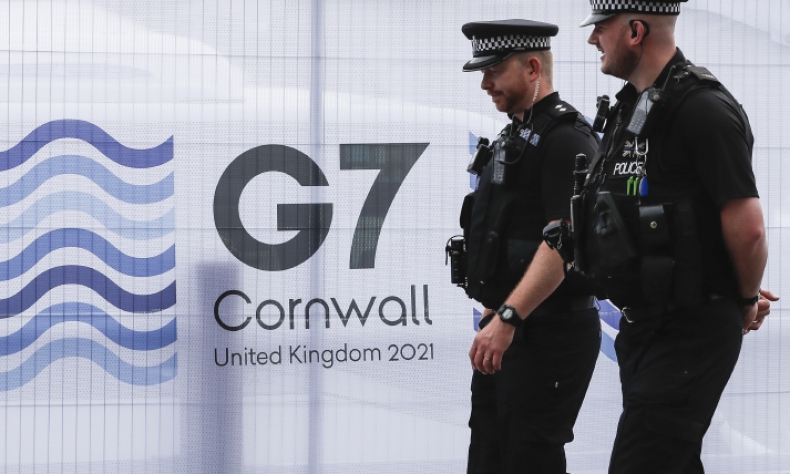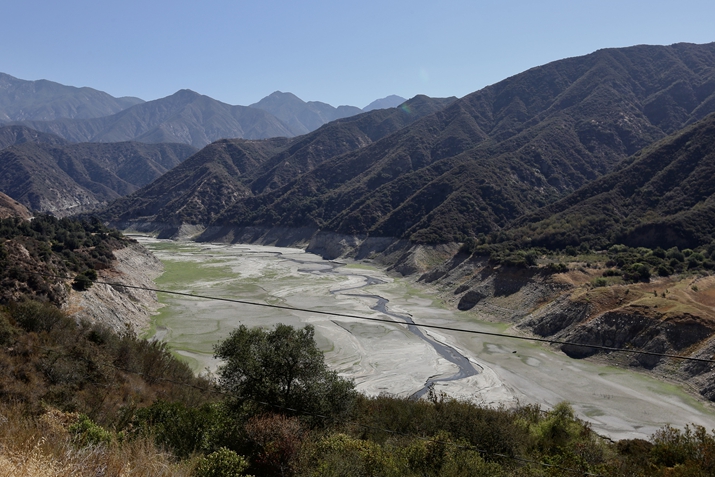G7’s Infrastructure Development Plan May Prove Tricky

If they can seriously improve their own infrastructure and do their utmost to help developing countries meet their needs, instead of playing the geopolitical zero-sum game, then different plans may well coexist or complement each other.
The Build Back Better World (B3W) initiative launched by the U.S. and its allies at the Group of Seven (G7) Summit in Cornwall, Britain, in June has grabbed recent headlines. According to the White House, B3W is a values-driven, high-standard, and transparent global infrastructure development plan zooming in on four areas: climate, health and health security, digital technology, and gender equity and equality. Its alleged objective is to help narrow the over $40-trillion need for infrastructure in the developing world.
However, in the eyes of many international affairs commentators and analysts, the G7 plan is an alternative designed by the U.S. and its allies to counter the Belt and Road Initiative.
This is not the first time the U.S. has initiated something like B3W. The Donald Trump administration introduced programs like Prosper Africa, Growth in the Americas, Asia EDGE (Enhancing Development and Growth Through Energy), Blue Dot Network, Economic Prosperity Network and Clean Network. Yet most of these achieved no substantive results. As the influence of the Belt and Road Initiative continues to grow, the U.S. is probably feeling more anxious. After finding its repeated criticisms, slanders even, against the initiative ineffective, it opted for a different approach—namely that of copying China’s work.
Once in office, the Joe Biden administration began planning an infrastructure development plan for “democracies” together with Britain, Japan, and other allies. The Council on Foreign Affairs, the Center for New American Security and other American think tanks released multiple reports advising on such a plan. Many scholars have pointed out that launching B3W exemplifies how the U.S. attempt to substitute and undermine the Belt and Road Initiative now enters a new phase of rallying support through values and collaboration with allies.
By pushing the G7 to agree on B3W, the U.S. is trying to drive close coordination between its transatlantic and Indo-Pacific alliances by forging an ideological bond. It is true that the U.S. has made some progress this time around in pooling domestic and external resources and leveraging the strengths of participating parties, but B3W is still miles away from actual implementation.
Whether it will end up nowhere like previous U.S. programs remains to be seen.
Divided attention
First, the B3W membership lacks cohesion. Though G7 countries have reached an agreement on the plan, they each have their own calculations and priorities.
Most European countries refused to be part of an anti-China coalition designed by the U.S. At a press conference during the G7 Summit, French President Emanuel Macron said France would neither be a vassal of China nor absolutely align with the U.S. German Chancellor Angela Merkel said, “We will never achieve solutions without China.” Both leaders stressed the need to strengthen cooperation with China.
Apart from that, due to varying demands, G7 countries still have disagreements over the geographical focus of B3W. Germany, France and Italy hope it will bolster their activities in Africa, while the U.S. hopes to advance its programs in Latin America and Asia; Japan, then, believes the Indo-Pacific region should be the focal point.
Second, B3W is not purely about infrastructure. The U.S. and other Western countries are pushing forward the plan to achieve geopolitical objectives through “exclusive group” politics and biased confrontation. Their promise to help the developing world does not display much sincerity, suggesting a gap between the plan and the needs of developing countries for recovery and development.
Most developing countries are soberly aware of the U.S.’ true intentions and its habit of paying lip service. In his recent article, political economist Shakeel Ahmad Ramay of Pakistan’s Sustainable Development Policy Institute shed some light on the essence of B3W, pointing out that it does not qualify as a rival to the Belt and Road Initiative, and is doomed to fail—if pursued to counter China.
Moreover, B3W’s blind emphasis on ideological principles and “high standards” will discourage many developing countries from joining it.
Third, B3W faces the problem of inadequate capability. The main source of funding for B3W would be America’s grand infrastructure plan, the very prospects of which remain uncertain.
Given the domestic partisan strife, the Biden administration could not afford to invest too much in this plan. Consequently, it had high hopes the other participants would share the funding burden together. But the EU, Britain and other U.S. allies are facing the difficult task of post-pandemic recovery. Due to the heavy strains caused by the pandemic, they find it hard to provide essential support for the U.S. with big amounts of money. In fact, the G7 Summit’s failure to lay down funding arrangements for B3W has already become a popular topic of ridicule.
Moreover, the U.S. and other Western countries have shifted most of their middle- and low-end manufacturing industries abroad, and their own infrastructure is often obsolete and poorly maintained. Their infrastructure construction capability can hardly match that of China’s.

Strength through unity
Since its inception in 2013, the Belt and Road Initiative has championed the principle of extensive consultation, joint contribution and shared benefits, as well as pursued high-standard, people-centered and sustainable development. Based on respecting different civilizations and heeding the opinions of all relevant parties, it has provided a new platform and new opportunities for participating countries to achieve greater development through mutually beneficial cooperation. Thus far, 140 countries and 32 international organizations have signed over 200 documents on Belt and Road cooperation with China. These outcomes are solid proof that the initiative, which is open, inclusive, sincere, and results-oriented, has won the genuine endorsement and support of its participating countries.
Today, the world faces the formidable challenge of post-pandemic recovery and tremendous infrastructural needs. In this context, the U.S. and other Western countries need to either take a positive approach toward the Belt and Road Initiative or even take part in it. If they can seriously improve their own infrastructure and do their utmost to help developing countries meet their needs, instead of playing the geopolitical zero-sum game, then different plans may well coexist or complement each other.
A dose of healthy competition is fine. China sincerely welcomes the continued participation in Belt and Road cooperation by other countries, international organizations, international financial institutions, and businesses. The nation stands ready to synergize the Belt and Road Initiative with infrastructure and development plans of partners around the world. At the same time, it is adamantly opposed to the practice of using infrastructure as a disguise for ideological confrontation or pseudo-multilateralism. China does not fear any Belt and Road Initiative imitations, for any ill-intentioned reproduction would prove unpopular and be rejected by the international community.
As the saying goes, imitation is the sincerest form of flattery.
The author is a diplomat with the Department of Policy Planning at the Ministry of Foreign Affairs of China.
 Facebook
Facebook
 Twitter
Twitter
 Linkedin
Linkedin
 Google +
Google +










